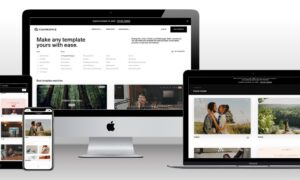Whether you’re starting your own website to blog, sell a product or service, or run your home business – the process is fairly simple and straightforward when compared to how complicated it was just a few years ago. Developers have created various tools that help you design and launch your website from scratch, without having to bump into too many technical difficulties.
What’s more, there are even online services that let you successfully buy a domain, design it, and launch it without having to work between multiple tools or applications. However, all this becomes easier when you know the technical jargon of websites, since you’ll be able to speed up the process and know what to go for.
In this blog, we’re going to introduce you to a handful of the most common technical terms you’ll be running into when starting your own website, so the next time you see it pop up somewhere, you wouldn’t have to spend hours googling the right answer. Now let’s get started!
1. Domain host
It begins with a domain host – to be able to set up a website, you will first have to purchase a domain from an online hosting provider. It’s basically an internet provider that helps manage your domain name, while also connecting the said name with your email, websites, and other web services that you need to run a website.
The first thing you’ll need to do is find a domain hosting service that you want to go with – just remember that the domain host you go with plays a big role in how visible your site will be in the future, thereby increasing traffic to your website.
2. Layout
Your website’s layout is basically the structure in which the content and images are arranged. Websites typically follow a basic structure, where there’s a banner, a header with additional information, a logo and name, and so on. All these elements need to be placed at the right place and in the proper size and hierarchy for the website to look appealing and functional to its users.
That’s why it’s important to either get the help of a professional designer, or refer to numerous other websites to see how they’ve handled their layout to understand how it should be done. Think of the layout as a way in which you put together different parts of the website together, by arranging them in a way that works best.
For instance, if your layout has the banner content hidden away underneath, folks who visit your page won’t be able to get the immediate information they need – such as what the page is about, what purpose it serves and where they can head to from there.
But this doesn’t mean that every website has to look exactly the same. You have enough freedom to explore various types of page layouts, but be sure to find one that not only looks good but is also functional.
3. Code and development
CSS, Javascript, and HTML are terms you may often come across. While you definitely don’t need to learn about these in-depth, all you need to know is that these are terms that refer to the different kinds of code that make your website run efficiently.
They are computer languages that make the beautiful website design and functionality come into place and work as it should. Interactions, design, and content is all handled thanks to these 3 computer languages that make your website possible.
4. Accessibility
In software, accessibility refers to making websites accessible to people with disabilities. There are certain disability guides which can be followed to make your website optimized for a larger audience. Under these guidelines, there are certain colors, sizes, text types, and so one which should be avoided in order to make it easier for people with disabilities to navigate and use the website.
For instance, creating CTA buttons where the button’s color and text color are almost the same can stand in the way of people who are visually impaired being able to read what’s written in the button. Instead, using contrasting colors makes it easier to view the given text.
5. Responsive design
Responsive design refers to the scalability of a website. Long back, websites were only viewed on computers, so it was a one-size-fits-all deal, where one website had to be designed only with one size in mind.
With the advent of mobile phones, laptops, and differing screen sizes, websites now have to be designed responsively, so that they can be viewed and used no matter what the screen size.
There are many sites online that help you design sites responsively right from the start, thereby simplifying the process. However, be sure to test out your website on different screen resolutions to be sure that the responsive design is functioning optimally.



































